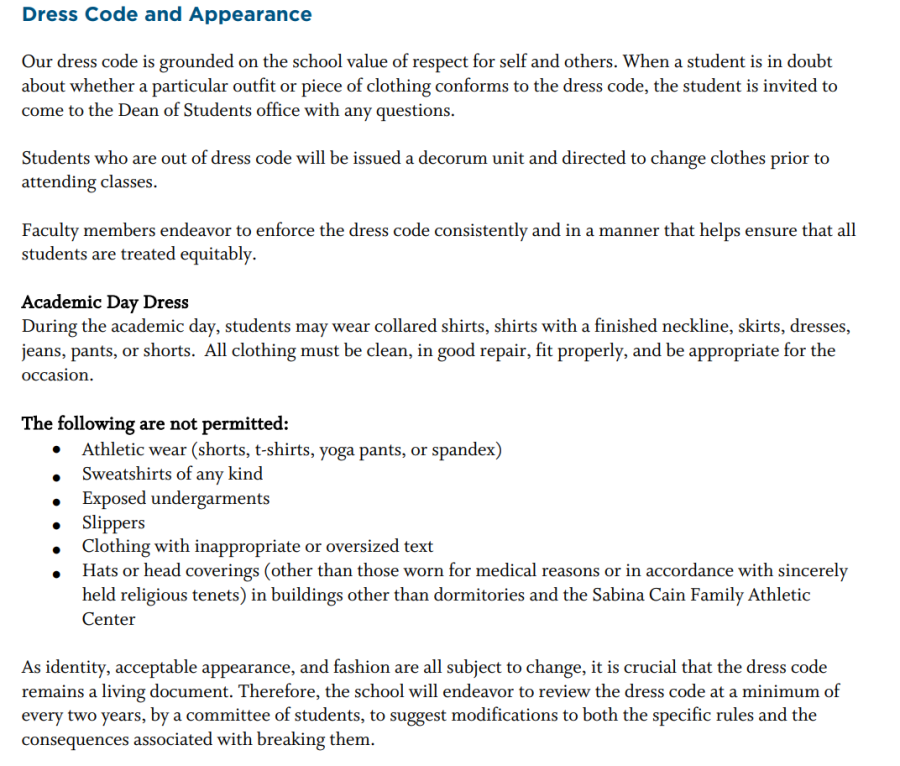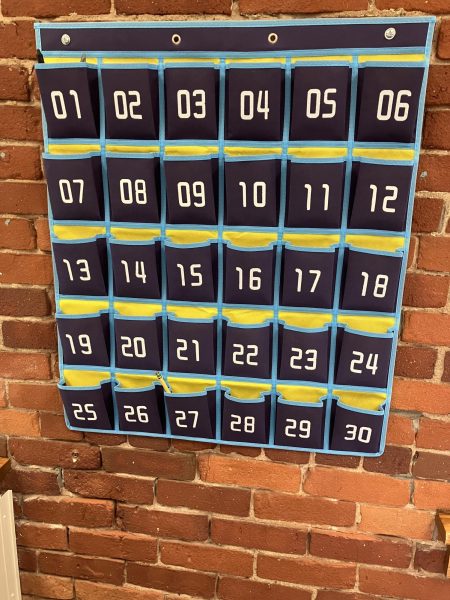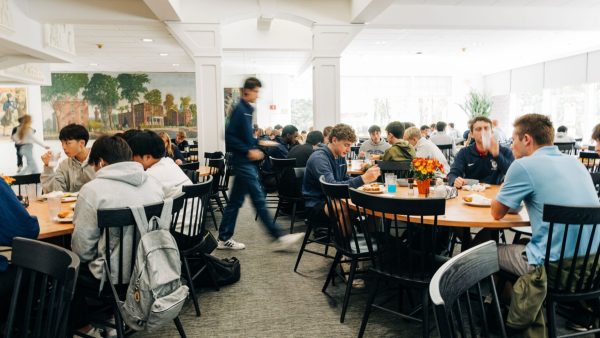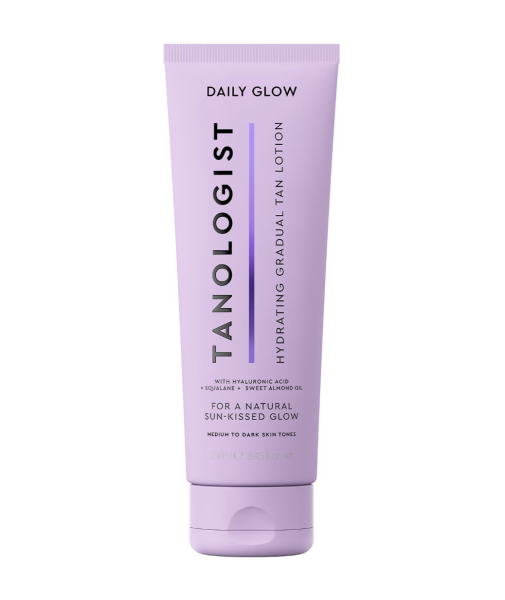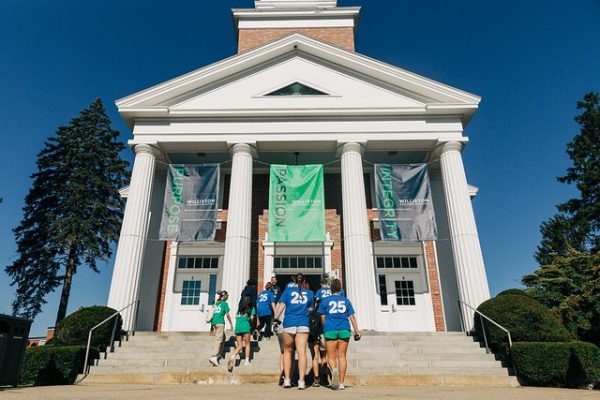Updated Dress Code “Aligns with Present Trends”
This year you might notice students walking around campus in flip flops during the academic day. It’s a small but noticeable change from previous years’ dress code.
At the start of the ’23 school year, students were informed about an update to the dress code. Although the school’s previous dress code largely the same, some minor regulations were made to remain current.
With such changes, some students are still uncertain about whether their outfits are ” in dress code” due to different teachers’ reactions.
The Williston Student Handbook states specific dress codes for academic days: students are allowed to wear blouses, collared shirts, jeans, skirts and dresses at appropriate lengths, while sweatshirts and sweatpants or any items presenting inappropriate language are not; on Willy Wear days, students may wear sweatshirts purchased at the campus store, while bottoms must remain in dress code; formal clothing is required for specific events and dress after academic day has no particular limitations. If students violate the dress code, they will be issued a unit and asked to change before attending class.
David Koritkoski, Acting Dean of Students students, believes that grey areas of the previous dress code have been updated to make it more equitable.
“We wanted to streamline the dress code and make it a gender-neutral dress code which would equally apply to everybody,” he said. “The basic tenants of a dress code didn’t change. We just made it a little more clear about the overarching principle that we should be dressed appropriately for the occasion.”
Deerfield Academy, a coeducational preparatory school in Deerfield, Massachusetts, still includes a gender-specific dress code.
“Boys are required to wear neckties with a collared shirt, tucked in; golf shirts may not be worn with a tie. T-shirts and athletic tops may not serve as blouses,” their website states.
Max Fujimori, a senior boarder from Connecticut, finds the dress code to be less strict this year.
“I was dress coded for multiple offenses including not tucking in my shirt the past two years which I thought was ridiculous,” he said. “But I have not been dress coded this year yet so I feel like faculty is either less strict or less focused on what we wear.”
This year’s dress code allows for flip flops, whereas they were not allowed in past years.
Daniela Metta, a junior boarder from Mexico City, believes she can be just as productive in sweatshirts and pants.
“In my old school (Colegio Hebreo Tarbut), they had a uniform [which allowed] the school’s hoodies and sweatpants. It was more comfortable and casual,” she said. “I think I would be more productive and focused on my work if I am dressed comfortable without having to worry about whether I am in dress code or not.”
Charlotte Carr, a senior boarder from Hingham, Mass., does not think the dress code is specific enough.
“I do think the dress code is less strict this year,” she said. “Some stuff just needs to be more universal. I feel like some people don’t really understand what is in dress code and what isn’t.”
Isabel Camacho, a 9th grader who attended The Bement School in Deerfield prior to starting middle school at Williston in 7th grade, said both school’s dress codes are similar, except one notable difference.
“It was pretty much the same in the Williston Middle School except they [Bement] were way stricter,” she said. “We had to wear uniforms every Monday.”
The 2022-2023 Williston Student Handbook recognizes the importance of keeping the dress code aligned with present trends.
“As identity, acceptable appearance, and fashion are all subject to change, it is crucial that the dress code remains a living document,” it states. “Therefore, the school will endeavor to review the dress code at a minimum of every two years, by a committee of students, to suggest modifications to both the specific rules and the consequences associated with breaking them.



